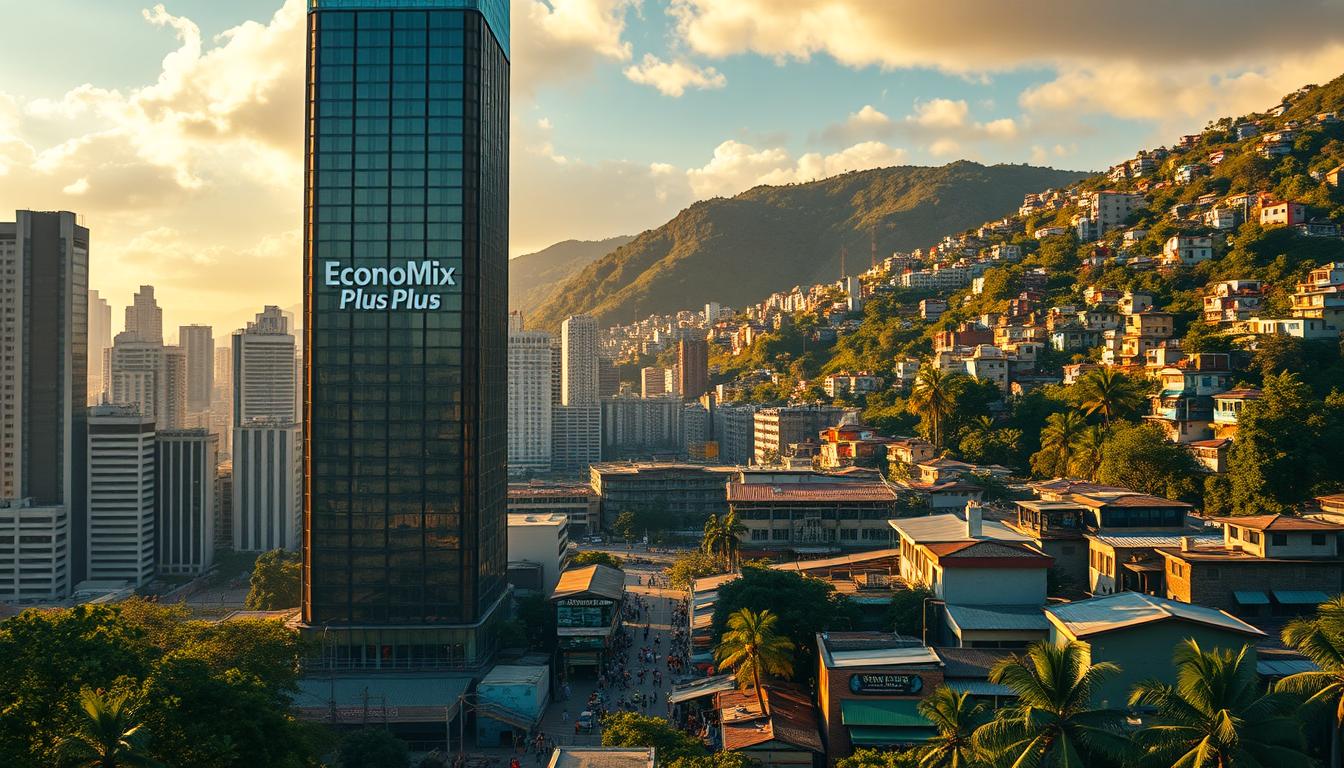How can a nation with such vast resources and economic power still leave millions of its citizens struggling? This question lies at the heart of Brazil’s paradox. With a population exceeding 205 million and a GDP per capita of $10,616, the country ranks among the world’s top economies. Yet, daily life for many remains defined by inequality and limited access to basic services.
The numbers reveal a stark contrast. While growth metrics paint a picture of prosperity, regional disparities and systemic discrimination fracture progress. Urban centers like São Paulo thrive, yet rural areas and favelas face persistent poverty. Fiscal policies and demographic pressures further complicate efforts to bridge these gaps.
You’ll discover how structural challenges—from uneven wealth distribution to social inequities—undermine the link between economic output and quality of life. The World Bank highlights that GDP alone fails to capture realities like access to healthcare or education. This analysis avoids endorsing traditional financial tools, focusing instead on systemic barriers.
What keeps a booming economy from uplifting its people? The answers lie in deeper layers of policy, history, and societal divides. Let’s explore why size doesn’t always equal success.
Key Takeaways
- Brazil’s economic size doesn’t guarantee equitable living conditions for its 205 million residents.
- GDP per capita of $10,616 masks sharp regional and social disparities.
- Uneven wealth distribution limits access to healthcare, education, and infrastructure.
- Fiscal adjustments struggle to address demographic and geographic complexities.
- Systemic inequities persist despite the nation’s global economic ranking.
Understanding Brazil’s Economic Landscape
Behind the GDP figures lies a nation grappling with demographic divides. With 26 states and 5,500 municipalities, the government faces challenges as policy coordination often clashes with local priorities. This decentralized structure creates uneven development levels, where bustling cities coexist with neglected rural zones in the context of Brazil’s economic landscape.
Economic Growth Amid Demographic Realities
Urban areas drive 70% of GDP, yet 15% of the population lives in remote communities. These remote areas often struggle with limited access to essential services, including healthcare and education, which further exacerbates their economic isolation.
Aging populations in the south strain pension systems, leading to increased financial pressure on social security programs, while northern states face youth unemployment that hinders economic progress and social stability. The World Bank credits agricultural exports and tech hubs for growth, but these sectors rarely uplift low-skilled workers, leaving many in poverty and without viable employment opportunities. This disconnect highlights the need for targeted policies that address the specific needs of diverse populations across the country.
Regional Disparities and the Federal Structure
Tax revenues flow unevenly—São Paulo receives 3x more infrastructure funding than Bahia. Coastal states attract global trade, while landlocked regions rely on outdated farming methods. Local governments often lack resources to address education gaps or healthcare shortages.
This fragmented system explains why national reforms struggle to gain traction. Economic momentum exists, but it’s tethered to geography and governance flaws that no single policy can resolve overnight.
Historical Context and Current Trends in Brazilian Growth
Boom-and-bust cycles define this nation’s economic story. Commodity exports fueled rapid expansion in the early 2000s, with soy and iron ore shipments driving 7.5% GDP growth in 2010. Yet these peaks masked systemic weaknesses that later stalled progress.
From Commodity Booms to Structural Challenges
The 2014 oil price collapse exposed overreliance on raw materials. Manufacturing productivity grew just 0.3% annually from 2010-2020, compared to 2.1% in emerging market peers. “Resource wealth became a crutch, not a ladder,” notes a World Bank assessment of this period.
Three factors explain the stagnation:
| Time Period | Growth Driver | Structural Challenge |
|---|---|---|
| 2003-2011 | Commodity Supercycle | Neglected industrial diversification |
| 2012-2016 | Consumer Credit Expansion | Rising household debt (78% of income) |
| 2017-2023 | Tech Sector Growth | Skilled labor shortages (42% workforce unqualified) |
Public Spending and Productivity Anemia
Infrastructure investment fell to 1.7% of GDP in 2022 – half China’s rate. The pandemic worsened this gap, diverting funds from long-term projects to emergency relief. You see the results in congested ports and outdated rail networks that add 18% to export costs.
Recent reforms aim to boost competitiveness through tax simplification. But past policy shifts show mixed results – 2016 labor law changes increased gig work without improving output per hour. Lasting solutions require bridging the divide between urban innovation hubs and rural resource economies.
Why doesn’t Brazil’s large economy translate into better living standards?
Daily struggles reveal a disconnect between national wealth and household realities in Brazil’s economy. Despite ranking among the world’s top 10 economies, 33 million face food insecurity while 16% lack access to clean water. This gap stems from systemic flaws in government resource allocation and public service delivery, impacting the way support is distributed across countries. The state of the environment and economic conditions in Brazil highlight the need for a comprehensive agenda to address these disparities, which have persisted for decades.
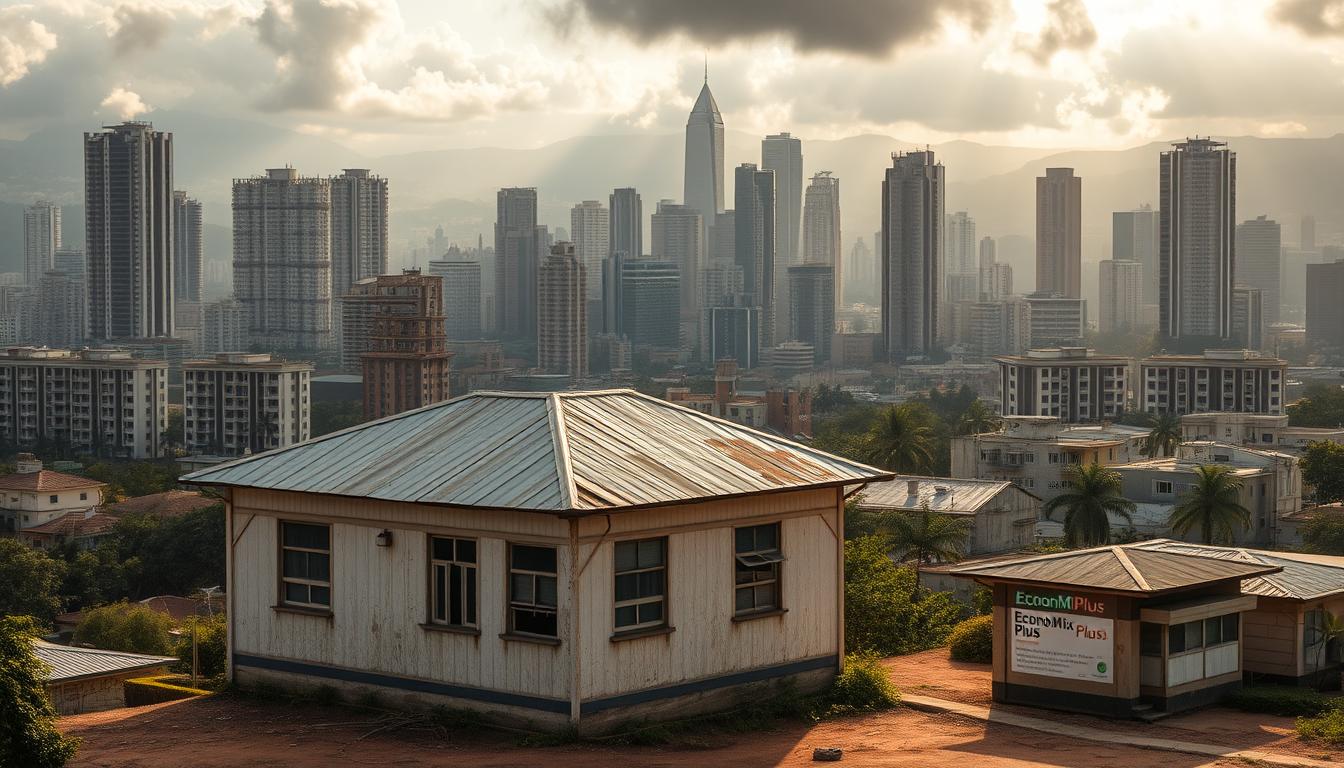
Key Factors Impacting Everyday Life
Underfunded schools and hospitals create generational bottlenecks. Children in low-income regions average 3.5 fewer school years than urban peers. A 2023 study shows only 12% of public health clinics meet staffing guidelines. These deficits trap families in cycles of diminished opportunity.
| Service | Urban Coverage | Rural Coverage | Quality Gap |
|---|---|---|---|
| Primary Education | 89% | 63% | 2.7x |
| Preventive Healthcare | 71% | 38% | 4.1x |
| Vocational Training | 44% | 17% | 5.8x |
Socioeconomic Disparities in Education and Healthcare
Marginalized groups bear the heaviest burdens. Indigenous communities experience 40% higher infant mortality rates than national averages. “Infrastructure investments often bypass regions needing them most,” observes a UN development report. Gender gaps persist too—women comprise 72% of healthcare workers but hold only 34% of management roles.
Government policies exacerbate these divides. The 2022 education budget allocated $1,200 per student in wealthy districts versus $380 in poorer areas. Fiscal management reforms since 2019 improved transparency but haven’t accelerated change where it matters most. Until resource distribution matches demographic needs, economic size won’t guarantee societal progress.
The Impact of Social and Political Divides on Economic Performance
Social fractures shape Brazil’s economic landscape more than raw GDP figures suggest. Nearly 21% of the population survives on less than $6.85 daily, with Afro-Brazilians experiencing poverty rates 15% higher than the national average. These divides create friction in labor markets and limit consumer spending power, highlighting the ongoing crisis in Brazil’s economic growth agenda and its impact on the environment and finance across Latin America.
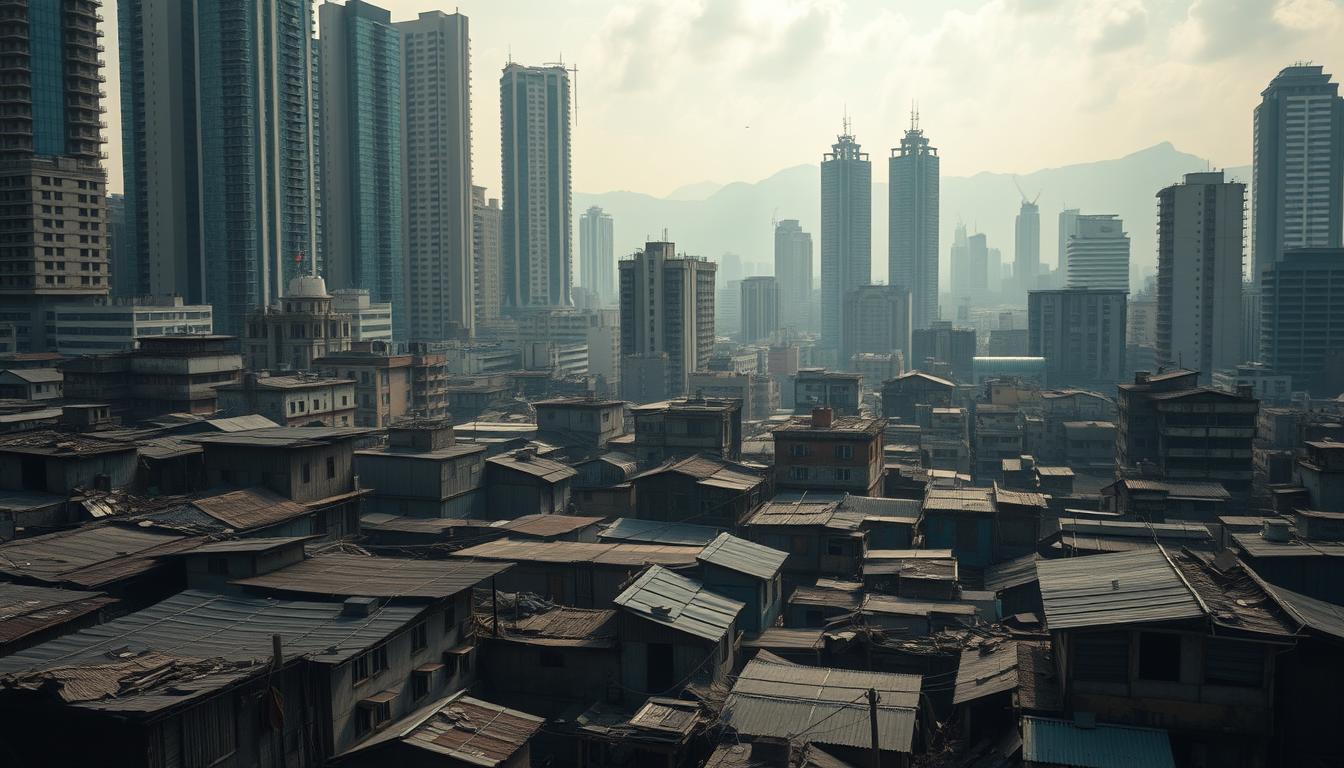
Challenges of Inequality and Poverty
Economic exclusion becomes self-reinforcing. Children born into low-income households face 40% fewer job opportunities by adulthood. “Poverty isn’t just about income—it’s about broken pathways to stability,” states a 2023 World Bank report analyzing intergenerational impacts.
Urban slums and rural villages share common barriers:
- Schools in marginalized areas operate with 60% fewer resources
- Healthcare wait times exceed 90 days in 32% of municipalities
- Formal employment reaches only 44% of working-age adults
Systemic Barriers to Social Mobility
Political polarization worsens resource allocation. Legislation favoring social programs often stalls in congress, delaying critical reforms. State governments spend 22% more per capita in affluent districts than in high-poverty zones.
Discrimination compounds structural gaps. A 2022 study revealed Afro-Brazilian workers earn 58% less than white counterparts in similar roles. Without coordinated policy shifts, economic growth remains tethered to privileged enclaves rather than national potential.
Infrastructure and Productivity: Catalysts for Change
Roads riddled with potholes and ports choked with delays reveal deeper systemic issues. Brazil’s infrastructure spending lags far behind its economic expansion—between 1990 and 2016, GDP doubled while critical public works stagnated. Maintenance budgets cover just 60% of required repairs, accelerating decay in transportation networks and energy grids.
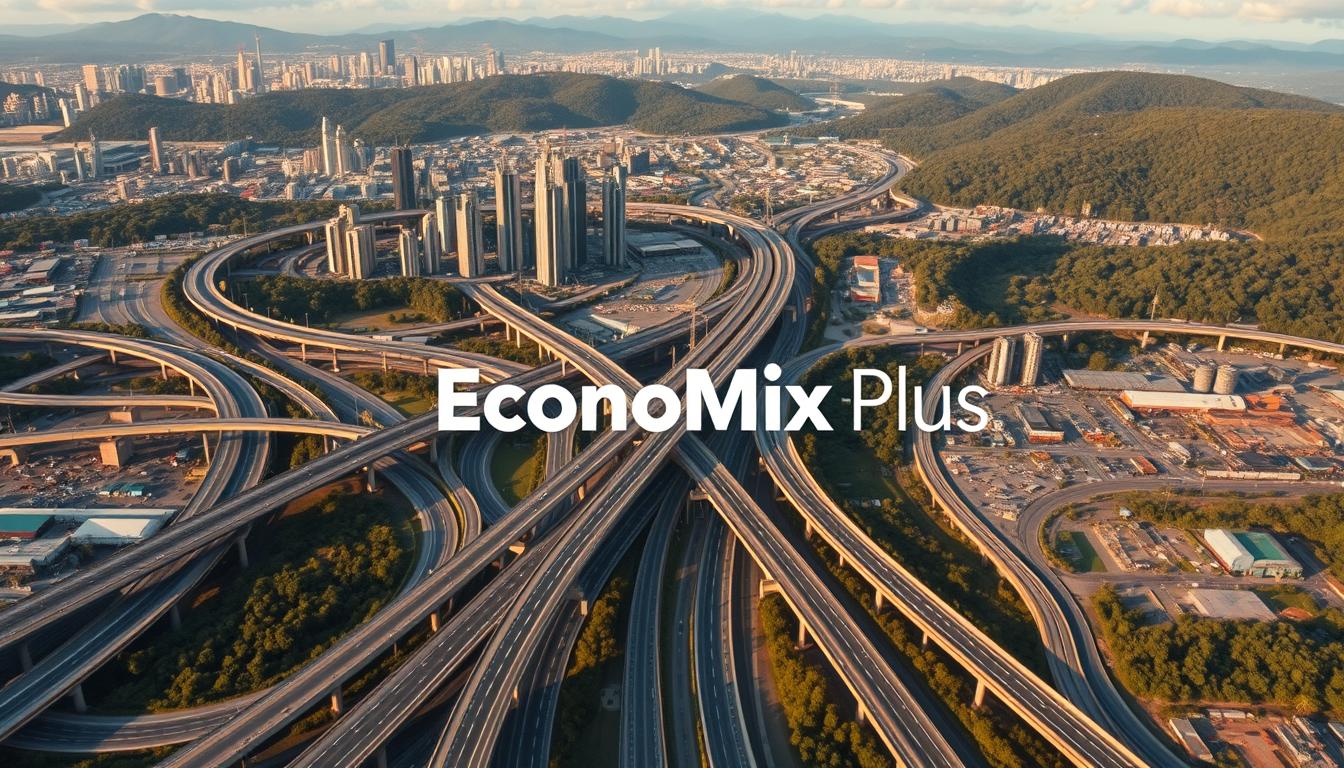
Investment Gaps in Transportation and Public Services
You’ll find stark contrasts between sectors. Railways move 15% of cargo versus 40% in developed nations due to outdated tracks. Urban water systems lose 38% of treated supply through leaks—triple the global average. These inefficiencies add $23 billion annually to business costs, eroding competitiveness.
| Sector | Annual Investment Gap | Maintenance Deficit |
|---|---|---|
| Highways | $4.1 billion | 42% |
| Ports | $1.8 billion | 57% |
| Schools | $3.3 billion | 64% |
Modernizing Infrastructure for Long-Term Growth
Recent proposals target management reforms and private partnerships. São Paulo’s metro system reduced delays by 70% after upgrading signaling technology. However, only 12% of municipalities have technical capacity to oversee complex projects. “We’re rebuilding bridges while designing bullet trains,” notes a Rio-based urban planner.
Energy grids show what’s possible. Solar installations in Bahia cut power outages by 44% since 2020 through targeted investment. Scaling such models requires aligning federal priorities with local execution—a challenge in Brazil’s fragmented governance structure. The path forward demands both funding and institutional redesign.
Trade, Innovation, and Private Investment in Brazil
Global competitiveness requires dismantling barriers that hinder market access. Recent reforms target trade complexity, with import tariffs dropping from 14% to 9% since 2019. These changes aim to attract investment while addressing systemic inefficiencies identified by the World Bank.
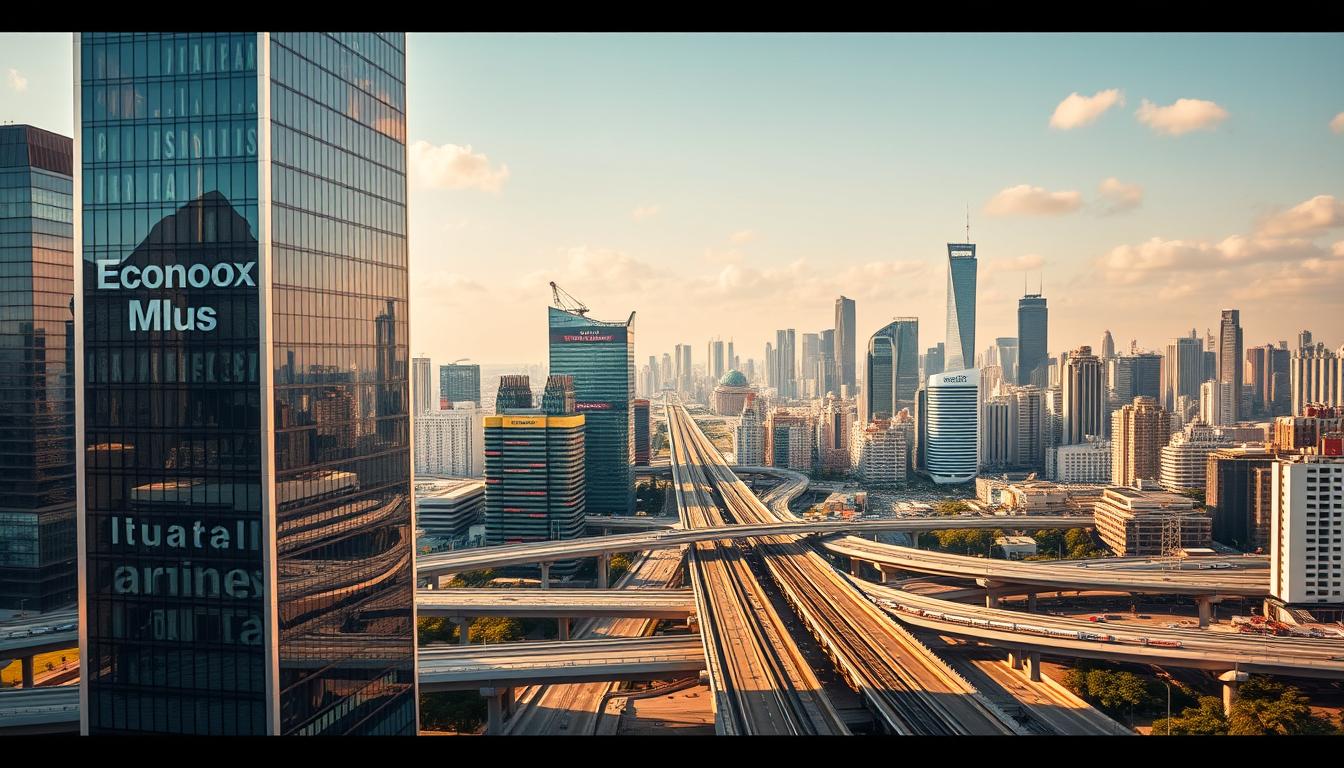
Overcoming Trade Barriers and Enhancing Global Competitiveness
Customs delays once cost exporters $25 daily per container. A 2023 digital clearance system cut processing time by 68%, boosting agricultural shipments. Key reforms include:
- Streamlined export certification for 800+ products
- Tax credits for firms entering new international markets
- Bilateral agreements covering 32% of global GDP
Fostering Innovation and Private Sector Involvement
Tech startups raised $2.3 billion in 2023—triple 2020 levels. São Paulo’s innovation districts now host 1,400 firms developing AI and green energy solutions. “The private sector drives 83% of R&D spending,” notes a recent industry report.
Financial reforms stabilize markets amid crisis risks. New bankruptcy laws protect investors, while venture capital funds grew 40% since regulatory changes in 2021. These shifts signal growing confidence in the country’s economic transformation.
Government Reforms and Fiscal Policy Challenges
Fiscal policy adjustments are pivotal in reshaping Brazil’s economic growth trajectories. Recent reforms target outdated systems that once drained resources through bureaucratic delays and uneven enforcement in the country. You’ll see how these changes aim to rebuild trust while addressing urgent financial pressures over the years.
Tax Reform and Streamlining Public Expenditure
A 2023 indirect tax overhaul consolidated five federal levies into a single value-added system. This cut compliance costs by 34% for businesses under $10 million revenue. “Simplification unlocks capital for growth-focused investments,” states a Treasury Department report analyzing the first-year results.
Public spending faces tighter scrutiny. Mandatory expense ceilings now cover 90% of the budget, up from 82% pre-pandemic. Key shifts include:
- Digital tracking for 100% of federal contracts
- Performance-based funding for health and education programs
- 15% reduction in non-essential government positions by 2025
Ensuring Fiscal Sustainability Amid Rising Debt
Debt-to-GDP ratios threaten to hit 79.6% by 2028 without corrective measures. The pandemic expanded deficit spending to 12% of GDP in 2020 – triple 2019 levels. Current strategies combine targeted tax hikes for top earners with subsidy cuts for fossil fuel industries.
Transparency drives recent management reforms. Citizen participation portals now display real-time expenditure data for 78% of federal projects. While progress is measurable, sustaining it requires navigating political resistance and shifting global economic winds.
Balancing Economic Growth with Environmental Sustainability
Economic expansion and ecological preservation form a delicate balance in shaping Brazil’s future. The country hosts 60% of the Amazon rainforest—a global carbon sink now threatened by unsustainable practices. Recent studies reveal 75% of national greenhouse gas emissions stem from land-use changes, demanding urgent policy shifts.
Climate Change and the Low-Carbon Transition
Deforestation rates surged 22% in 2023, releasing 1.2 billion tons of CO₂ annually. Public spending reforms aim to redirect $4.3 billion toward renewable energy and sustainable agriculture by 2025. You’ll see this in solar farm expansions across Bahia and wind power projects in Rio Grande do Norte.
| Region | Deforestation (sq mi) | Carbon Emissions (Mt CO₂) |
|---|---|---|
| Amazon Basin | 3,900 | 890 |
| Cerrado | 1,200 | 210 |
| Atlantic Forest | 180 | 34 |
Protecting Critical Ecosystems
International partnerships now fund 37% of Amazon conservation efforts. Norway’s $580 million climate finance initiative supports indigenous land management—a model reducing illegal logging by 63% in protected zones. “Ecosystem services could generate $15 billion yearly if prioritized,” states a 2024 UN environment report.
Private capital flows into reforestation bonds grew 140% since 2022. Yet challenges persist: only 12% of degraded pastures undergo restoration despite federal incentives. Aligning economic planning with environmental targets remains key to securing both growth and biodiversity.
Conclusion
Navigating economic potential amid systemic barriers remains this nation’s defining challenge. While GDP growth positions it as Latin America’s powerhouse, 33 million citizens face food insecurity—a paradox rooted in decades of uneven development. The World Bank notes infrastructure gaps cost businesses $23 billion annually, stalling poverty reduction efforts.
Recent tax reforms and energy sector innovations demonstrate progress. São Paulo’s tech hubs now drive 83% of private R&D investment. Yet outdated policies still limit rural healthcare access and educational capacity. Public spending on highways and ports trails global averages by 42%, weakening trade competitiveness.
Success hinges on aligning fiscal priorities with social needs. Streamlined regulations boosted agricultural exports by 68%, showing what’s possible. But without addressing regional disparities, growth remains confined to urban enclaves. The path forward demands coordinated action—leveraging private sector dynamism while rebuilding trust in governance.
As global markets evolve, balancing economic ambition with equitable policies will determine whether this nation transitions from perpetual potential to sustained prosperity.
